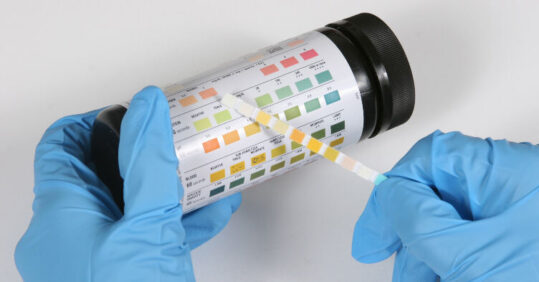Rapid test could help treat UTIs more effectively

Urinary tract infections (UTIs) could become easier to treat thanks to a new test developed by researchers.
The test rapidly detects what type of UTI a patient has by using viruses to infect the bacteria causing the infection, allowing doctors to use targeted antibiotics to treat the UTI or use the virus itself to treat the infection.
The developments are reported in Nature Communications and a partner paper, also in Nature Communications, and could lead to more effective treatment of UTIs in the face of increasing antibiotic resistance.
Related Article: Better workplace support needed for women’s health issues, nurses warn
Around one in two women are affected by cystitis during their lifetime, and many will suffer recurrent UTIs. Bladder infections can cause significant pain, and treating UTIs is becoming more difficult as bacteria become more resistant to antibiotics.
It takes several days to identify the type of bacteria causing the infection using conventional diagnostics, meaning doctors are often left to blindly prescribe antibiotics without knowing how effective they might be. Having information about the infection makes it much easier to treat the UTI and reduces the use of ineffective antibiotics.
The new test, developed by scientists at ETH Zurich and Balgrist University Hospital, employs natural viral predators of bacteria, known as phages, which are highly specialised viruses that can selectively target bacteria.
By determining which phages were more effective against Escherichia coli, Klebsiella and Enterococcithe, the three main types of bacteria that cause UTIs, the researchers could use them to detect the type of bacteria causing the UTI. The researchers modified the phages to produce an easy-to-measure light signal allowing them to reliably detect the type of bacteria present in a urine sample in less than four hours, allowing the rapid identification of effective antibiotic treatment.
In addition, the phages themselves could ultimately be used to treat the UTI directly. Phage therapies which use the virus to fight bacterial infection, have been used for over a hundred years but fell out of favour, particularly in Western countries, when penicillin was discovered. There is a renewed interest in the potential of phage treatment as antibiotic resistance increases.
Related Article: NICE guidance updates criteria for diagnosis of UTI in women
The researchers found that the strength of the light signal could be used to determine how well a patient is likely to respond to phage treatment; the more the sample glows, the better the bacteria will respond to phage therapy.
However, previous phage therapies have had one problem. ‘Phages aren’t interested in completely killing their host, the pathogenic bacterium,’ explains ETH researcher Samuel Kilcher, one of the study’s primary authors.
During the study, the researchers genetically modified the phages to make them more efficient at destroying pathogenic bacteria. The modified phages produce not only new phages inside the infected host bacterium but also produce bacteriocins, proteins which kill or inhibit the growth of other bacteria. This double-barrelled attack makes the treatment more effective.
Related Article: Government proposes new legislation to stop ‘unfairly denied’ care home visits
The researchers hope to test the efficacy of the new phage therapy in clinical trials with selected patients following this initial proof of concept study.

See how our symptom tool can help you make better sense of patient presentations
Click here to search a symptom

